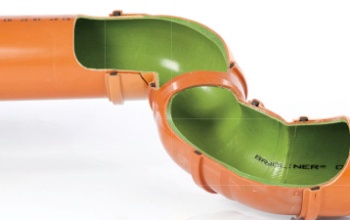Pipe Relining: What Are The Advantages And Disadvantages?
There are a plethora of plumbing issues which homeowners are regularly exposed to, which if not foreseen can cause disruption and result in great frustration.
Central to plumbing systems, the constant operation of pipes means problems can naturally occur over time; a result of occurrences such as residue buildup, poor homeowner care, and wear in the structure.
Serious issues can arise in pipes in the blink of an eye: tree-root intrusion, cracks, and blocked drains to name a few. All are a result of weaknesses in its structure, which can luckily be remedied in a quick, cost-effective way thanks to something called pipe relining.
What is Pipe Relining?
Pipe relining is a modern-day method of repairing damaged pipes. As the name implies, the pipes are relined, placing a strong inner lining inside the old pipes without digging the damaged pipes up.
Our pipe relining experts use a drain-camera to inspect the damaged pipe and assess the extent of the damage. Then, any debris is removed to guarantee a clean pipe. The lining is then installed in the pipe. The liner will cure over time and form a protective coating within the pipe.
This option of drain relining offers a practical solution, especially in drains located in hard-to-access areas of your premises.
In this article, we’ll analyse the pros and cons of pipe relining.

What are the Pipe Relining Advantages?
Let’s start with the advantages of pipe relining, as the list of the benefits of pipe relining are comprehensive:
Relining the pipe can be the inexpensive option
The cost involved with relining your pipes will most likely be affordable to you, especially in comparison to the traditional process (which involves heavier machinery, more time on the job & clearing of structures that have been dismantled).
Often no extensive digging is required
Older methods involve the digging of trenches, which increases not only the cost, effort, and time spent on the job, it poses a risk of property damage. Considering the pipe relining process doesn’t require any digging, those risks are mitigated.
Pipe relining is usually a quick process
Domestic pipe relining doesn’t take long at all. How long the relining process takes can vary from case to case; however, in most instances, the entire job can be completed within a single working day. That’s conducive to efficiency, cost-effectiveness and overall satisfaction.
Long-lasting results
No dig pipe repairs are performed using a specially formulated resin that is built to last. Once internally cured to the piping structure, the new casing is highly durable, minimising the chance of aforementioned problems occurring, at least for a substantial period of time. Its anti-corrosive build is optimally sealed, meaning leaks aren’t an issue.
Environmentally responsible
Leaking pipes pose an environmental hazard. Combatting this with a pipe relining solution facilitates efficient drainage, reducing the potential risk posed. In addition to this, the lack of digging operation means lower energy consumption. From start to finish, you’re lessening your grip on our fragile environment.
What are the Disadvantages of Pipe Relining?
I know what you’re thinking; it sounds too good to be true, so is it? There is only really a couple of disadvantages of trenchless pipe relining and mainly that's the initial financial output.
Various factors can affect the actual pipe relining cost, such as the size and length of the pipe that needs to be relined and the material that the pipe is made from, but prices, on average, can start from over $500 per metre. Costs do vary from state to state and depending on each individual project. But, if the initial financial output is higher than traditional pipe replacement, pipe relining is far less destructive!
Although it may seem quicker to access a pipe for conventional replacement, have you considered not only the initial dig, but the addition of the cost to have your garden re-landscaped or driveway re-concreted? That's not even to mention the longevity of a 50 year lifespan for pipe relining, which when all added up, will cost you much more than relining the cracked or broken pipe.
The only other notable disadvantage to no dig pipe relining is that it can’t always be performed. In the case of significant pipe damage, larger gaps can make the moulding to the structure process all too difficult. On the other side of the coin, if pipe damage is too minimal to warrant a complete drain pipe relining, pipe patching is a pipe repair option worth looking into.
Take a look at our team carrying out a pipe relining project under a Sydney house.
Sydney Pipe Relining Specialists
Pipe relining isn’t always offered by plumbing and drainage companies. As a service that requires specially trained tradespeople and the appropriate equipment, you should only entrust the experts when it comes to a job as important as this.
To discuss any of the pipe liner information mentioned in this article, or to enquire about our pipe relining solutions, get in touch today on 02 9191 7374, or fill in a job booking form.
Find out more about the pipe relining process here - What is pipe relining?
